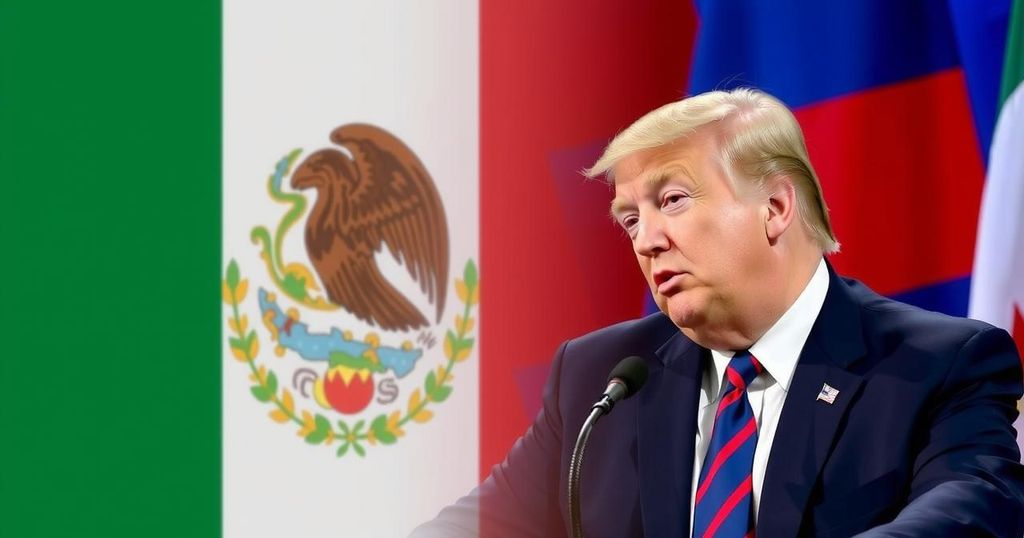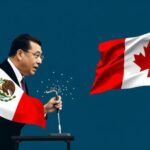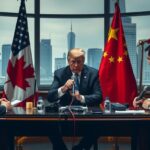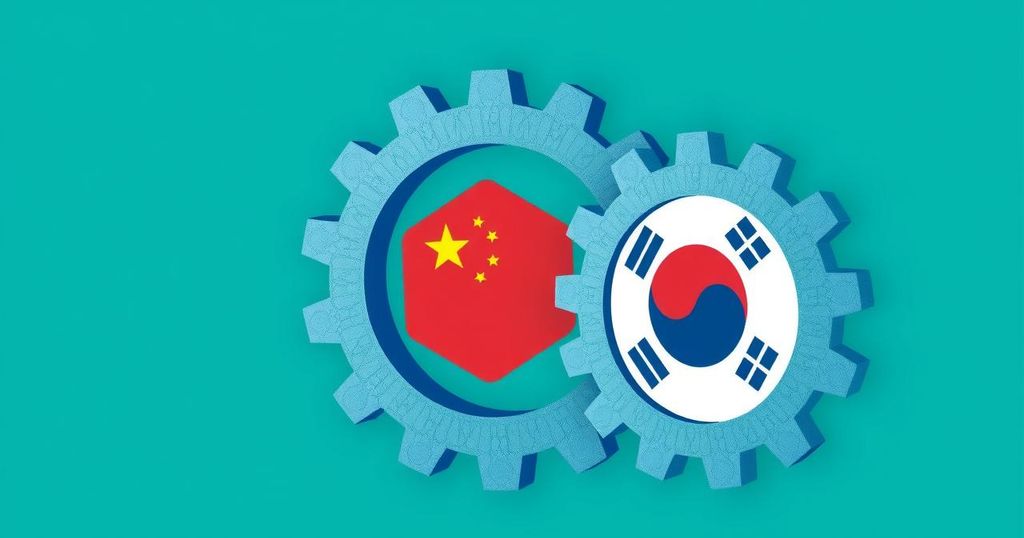Trump Plans Tariffs on Canada, Mexico, and China to Combat Drug Trafficking
President-elect Donald Trump plans to impose tariffs on Canada, Mexico, and China starting on January 20, 2025, aiming to reduce illegal drug inflow and border crossings. The tariffs will be set at 25% for Mexico and Canada, and an additional 10% for China. Experts warn that these tariffs could lead to higher prices for U.S. consumers, costing households an estimated $2,600 annually.
President-elect Donald Trump reaffirmed his commitment to imposing tariffs on Canada, Mexico, and China commencing on his first day in office, January 20, 2025. He articulated that his administration would implement a 25% tariff on all goods entering the U.S. from Mexico and Canada as a measure to combat the influx of illegal drugs, particularly fentanyl, and unauthorized border crossings. Trump emphasized that these tariffs would remain in place until these neighboring countries address the issue effectively, stating, “This Tariff will remain in effect until such time as Drugs, in particular Fentanyl, and all Illegal Aliens stop this Invasion of our Country!” Furthermore, he intends to levy an additional 10% tariff on Chinese imports, pointing out a perceived inadequacy in China’s actions to prohibit drug trafficking. Trump’s proposal for such tariffs could result in notable price increases for American consumers as it shifts the cost burden onto them. According to estimates from the Peterson Institute for International Economics, these tariffs could cost U.S. households approximately $2,600 per annum.
During his campaign, Trump had previously suggested tariffs on Chinese goods ranging between 60% and 100% and sought to impose a 10% to 20% tax on imports from all trading partners. His recent statements confirm a continuation of these tariff strategies in his intended economic policy.
The discussion surrounding tariffs, particularly under the Trump administration, is framed by a broader debate on trade relations and domestic economic policies. Tariff imposition is often justified as a protective measure to safeguard national interests, especially in terms of public health and security. Trump’s focus on drugs and illegal immigration adds a complex layer to the trade tariff narrative, as he seeks to link economic policy with criminal justice and border security. Given the historical context of tariffs used to influence foreign policy, Trump’s planned tariffs may be seen both as an economic strategy and a political stance.
In summary, President-elect Trump’s proposed tariffs of 25% on goods from Mexico and Canada and an additional 10% on Chinese products signify a continuation of his administration’s hardline trade policies aimed at curbing illegal drug trafficking and border issues. While these strategies reflect his administration’s priorities, they also raise concerns among economic analysts regarding potential increases in consumer prices. The estimated additional burden on American households could shift the discourse on trade back to domestic socio-economic impacts, underscoring the intricate relationship between trade and national security.
Original Source: abcnews.go.com








Post Comment